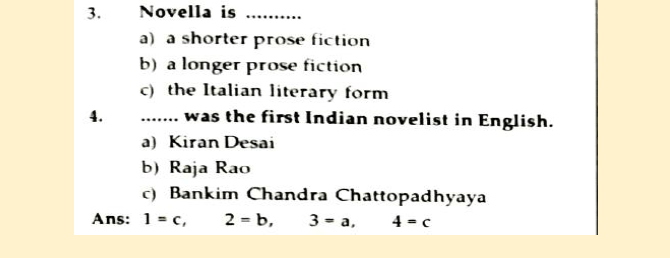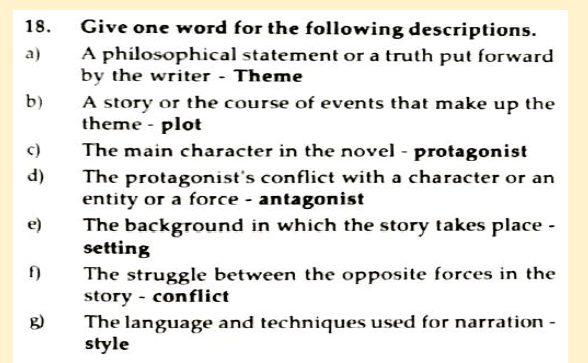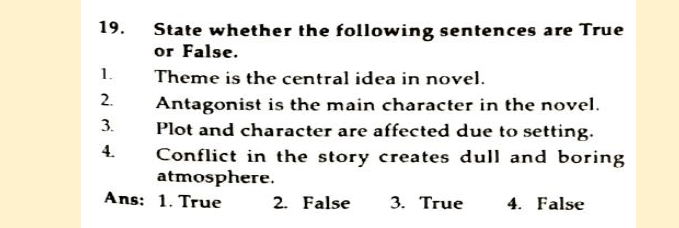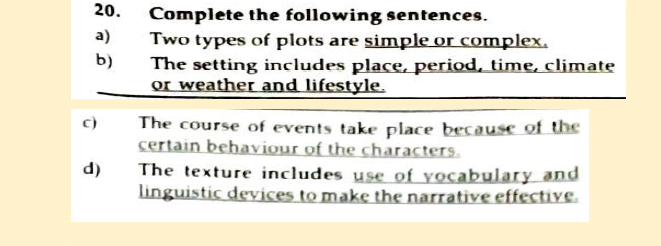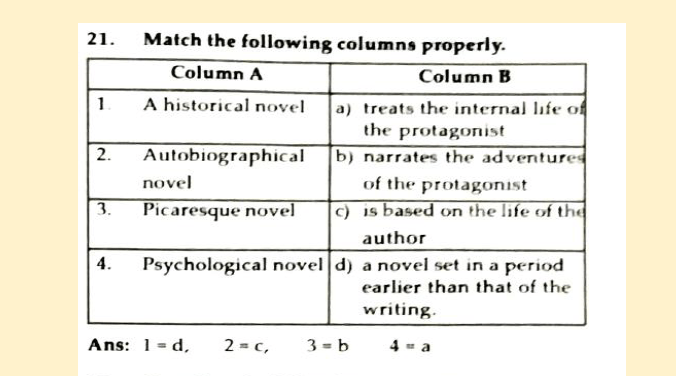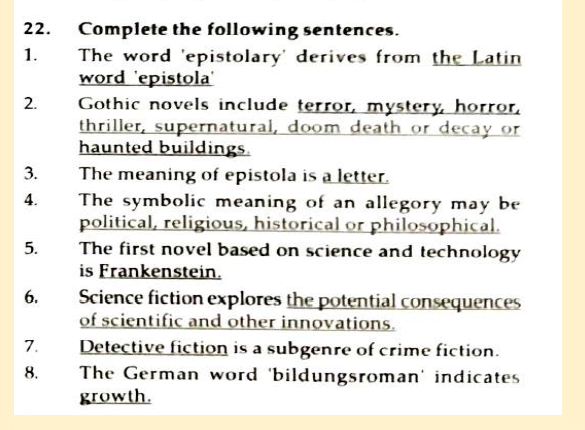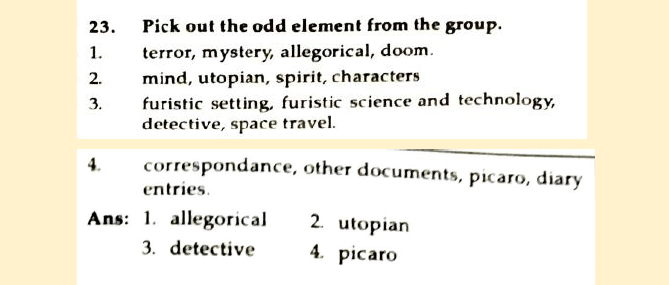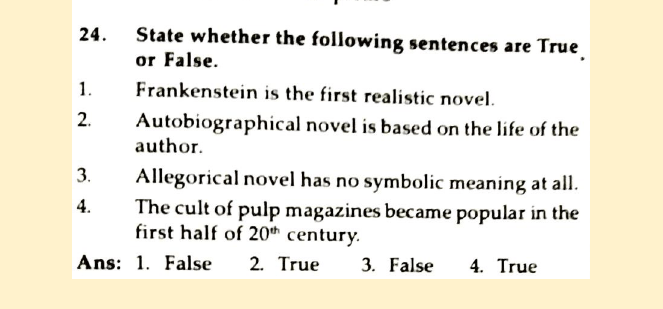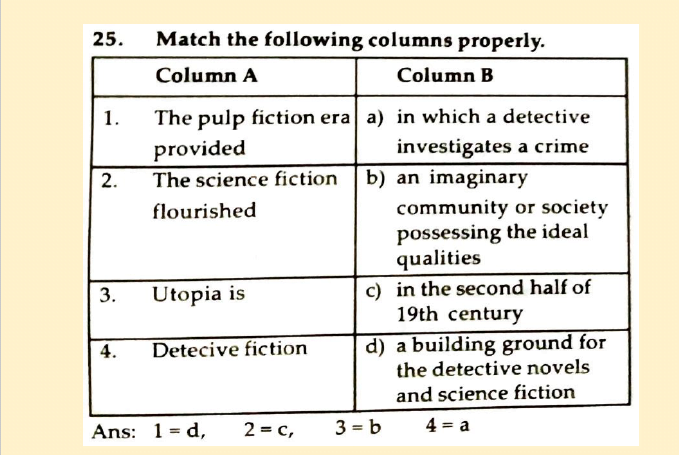Question & Answers
Question & Answer: History of Novel : Std.12th New
Syllabus
Brainstorming Activates

Ans:
| A | Answer |
| (a)Murasaki Shikibu | Tale of Genji |
| (b) Novella | New |
| (c) Don Quixote | Cervantes |
| (d) Rajmohan’s Wife | Bankimchandra Chattopadhyaya |

Ans: (i) Graham Greene (Graham Greene was an English novelist; the others are Indian writers)
(ii) Theme (the others are aspects of the setting)
(iii) Novella (‘Novella’ is a novel’; the others are the elements of a novel)

Ans:
(i) The two types of conflicts that the plot may have are internal (inside the mind of the character)
or external (with other characters or entities).
(ii)The word ‘picaresque’ is originated from the Spanish word ‘picaresque,’ which means a rogue.
(iii) The epistolary novel presents the narrative through a series of correspondence or other
documents like letters or diary entries.
(iv) In the eighteenth century, the middle class could get the time for reading and discussing the novels
because the spread of machines helped them in their work and could provide them with some
spare time. 
Ans:
Style of the novel
The language and the techniques used by the author for the narration of the course of events is known as the ‘style’. An author can use extensive vocabulary and difficult phrases or he may be brief and could write only to the point or he may mix both according to the requirement of his story. He may use linguistic devices like figures of speech to make the narrative effective. All these factors decide the ‘texture’ of the narration and create an impact on the readers.
Stream of consciousness novel
The phrase ‘Stream of consciousness’ means the flow of thoughts in the minds of the characters. This phrase was coined by William James in his treatise ‘Principles of Psychology.’ (1890). In such a novel, incidents in the plot are in the sequence of their occurrence. The novelist narrates them just as they occur in the minds of the characters. Sometimes they do not make sense; but they truthfully represent the thoughts without any censoring or editing.
Novella
The word ‘Novella’ which means new is originated from the Italian word ‘novelle’. A Novella is a type of prose fiction which is shorter than a full length novel and longer than short stories. It is a well-structured yet short narrative, often satiric or realistic in tone. Novella usually focuses on one incident or issue with one or two main characters and takes place at a single location. Given below are some of the famous novellas in English:
(1) ‘The Heart of Darkness’ by Joseph Conrad
(2) ‘The Tum of the Screw’ by Henry James
(3) ‘Billy Budd’ by Hermann Melville
(4) ‘Death in Venice’ by Thomas Mann
(5) ‘Seize The Day· by Saul Bellow
(6) ‘Pearl’ by John Steinbeck
Indian tradition of novels
Indians have also played a major role in the writing of English Novels. ‘Rajmohan’s Wife’, by Bankim Chandra Chattopadhyaya was the first novel in English written by an Indian. The period after that is marked by a few more novels written by Indian writers. These novels were based on either nationalistic virtues or social issues. Mulkraj Anand, R.K. Narayan and Raja Rao were the major trio who prevailed in the period after that. Novelists like Anita Desai, Nayantara Sahgal, Arun Joshi and Manohar Malgaonkar changed the current of Indian English novel through their works. Amitav Ghosh, Vikram Seth and Upamanyu Chatterjee improved upon the Indian novel in English by adding new features to it. In recent years, Indian novelists like Salman Rushdie, Arvind Adiga, Arundhati Roy, Kiran Desai and Kiran Nagarkar have come into the limelight. The tradition of the Indian English novel has undergone a vital change since its birth and has undoubtedly a very bright future.
History-of-Novel-part-1


















